Enthusiast photographers are choosing between these two types based on lens compatibility with body type and desired focal length. New EF and EF-S lenses made by Canon are both sold with their significant Canon DSLR cameras. Each lens serves a different purpose, depending on the camera body it is used in conjunction with.
Benefits of Canon lenses:
- Professional-grade glass and coatings for optimal image performance;
- Superior durability and all-weather performance;
- Consistent and intuitive controls for more efficient workflow;
- The smallest, lightest, and most affordable high-quality lenses;
Many photographers are not sure what the difference between the lenses in the Canon’s E-lines is, and which one they should purchase for their camera. A few major differences that you need to know before deciding on which lenses to buy for your camera!
What are EF Lenses by Canon?
Canon EF stands for full-frame and super versatile lenses. They’re also very easy to use, reliable and can be used on a variety of Canon cameras. If you don’t have an EOS camera body yet, these lenses will operate with it as well! Additionally, if you own other brands such as Nikon or Sony but want to switch over to Canon for your photography needs – these lenses should do the trick too.
Basically, all this lens is missing is the “S” at the end of its name because that would indicate that they were designed specifically for APS-C sensor cameras (think of crop sensors). But don’t worry, this lens is fully compatible with crop sensor cameras too! It just won’t have the same magnification as it offers on a full-frame camera.
EF lenses by Canon are also ideal for videography work because they offer fast autofocus performance that works well in most situations.
What are EF-S Lenses by Canon?
While EF lenses can be applied on crop sensor cameras as well – it doesn’t operate on other camera bodies. Unfortunately, that means Canon EOS camera bodies without full-frame sensors will never accept this type of lens due to its size mismatch. However, there is another option! That’s where Canon EF-S comes in handy since it was specifically created for use with APS-C (crop) sensor DSLR cameras such as the 70D or 80D.
Canon EF-S lenses feature a smaller design that’s much more compact than their full-frame counterparts. This makes them all the better for use with crop sensor DSLR cameras, which typically lack the same size and weight properties as full-frames. It also helps to make this lens less expensive (due to cheaper material costs) since they were designed specifically for APS-C sensors – but don’t think you’re missing out on quality just because it’s an “EF-S”.
What Lens Type Will Fit Your Canon Camera?
What cameras will fit an EF lens?
Canon EF lenses are the larger, full-frame (FF) lenses. They are compatible with DSLR cameras that also have APS-C or FF sensors like those found in many of their most popular models such as the EOS 80D and 77D. EF lenses will work great on these Cameras because they are equipped with a short back focus distance, which makes it easy for them to achieve infinity when paired with an APS-C sensor.
What cameras will fit an EF-S lens?
EF-S lenses were made specifically for cameras with APS-C-sized image sensors. They simply won’t work with full-frame or 35mm format DSLR bodies, but they will work on all EOS Digital SLRs including the Rebel series and Canon’s line of PowerShot digital point & shoot models.
The main benefit to using an EF-S lens over a regular EF is that it has a smaller internal flange distance that allows them to be much more compact than similar focal length “EF” lenses. This makes them ideal for use on small camera bodies like those found in most entry-level consumer/prosumer DSLRs today as well as super zoom bridge-style cameras where every millimeter counts!
How to Identify EF and EF-S Lenses?
EF lenses were specifically made for full-frame DSLR cameras by Canon. You can use them on any of the company’s EOS models, whether they’re APS-C or full frame.
EF stands for “electro focus”. They can autofocus without an adapter and feature a rear focusing design that increases the speed at which you lock in your subject. They also have electronic contacts so camera bodies can communicate with each other to control aperture settings among other things. This allows some older film SLRs like the original EOS D30 to continue using manual exposure modes even if new digital cameras lack mechanical dials.
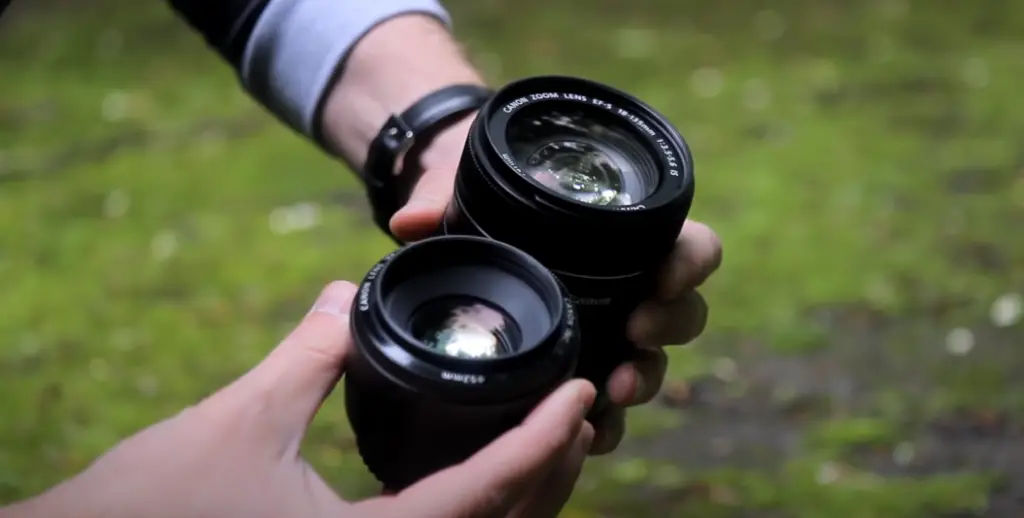
EF-S lenses are designed for cameras with APS-C size sensors. They can be used on EOS models that feature both APS-C and full-frame sensors, but they will vignette when mounted to a camera body featuring an even smaller sensor than the one found in their lens mount.
The difference is that these optics only come in fixed focal length designs (no zoom) which means you typically get less glass inside of it since there isn’t space taken up by moving components such as gears or optical elements inside the barrel itself. This allows them to maintain compact dimensions while boasting impressive image quality across their faster f/ratio ranges.
Key Differences
EF and EF-S lenses are equally considered smart DSLR lenses. The major difference between the two is that they have different mounts to fit on a different line of cameras. Canon has two main lines: EOS for full-frame, and EFS for APS-C (crop).
If you’re using an APS-C camera like a Rebel/Rebel TxxD or 80DX, then you’ll need an EF-S lens because it won’t physically fit onto a full-frame body such as the new M50 mirrorless camera from Canon. If your current mount is going to be permanent – for example, you’re only using the camera for landscapes and will never switch to another mount – then it may be worth spending more on an EF lens.
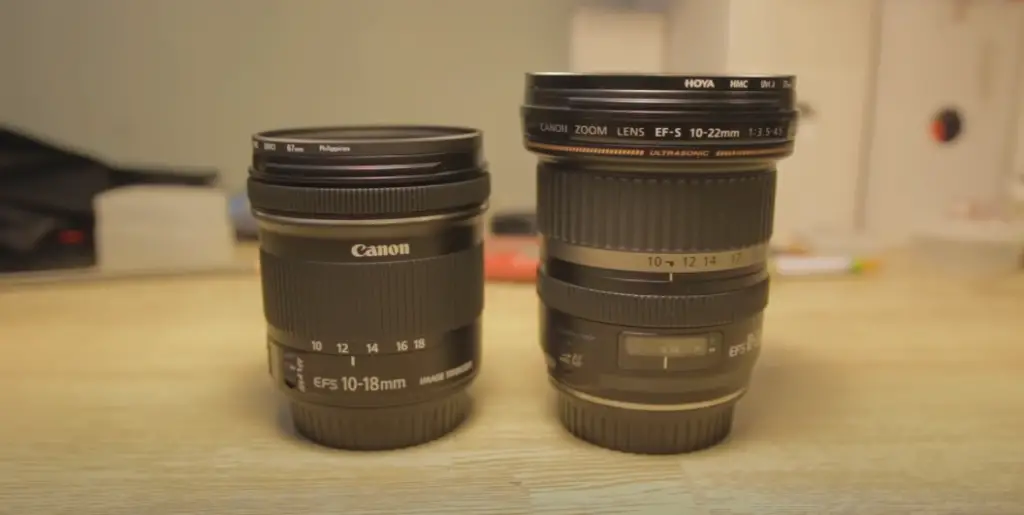
The other thing that separates Canon EF from Canon EF-S is that the latter are not full-frame lenses. Both E-line lenses were made specifically for crop sensor cameras so they don’t provide as much coverage of a wide-angle shot or zoom in as closely. If your goal is to shoot photos where there isn’t any zooming necessary (landscapes), this won’t matter much but if you plan on shooting indoors or with wildlife/sports, you’ll want at least one full-frame lens later down the road anyway.
Check more guides to improve your photography skills:
Canon EF vs. EF-S Lenses: A Comparative Analysis
When it comes to Canon lenses, there are two main categories to consider: EF (Electro-Focus) and EF-S (Electro-Focus Short-back focus). Both of these lens types are designed for Canon’s line of EOS DSLR cameras. While they share many similarities, there are also crucial differences that can significantly impact your photography experience. This table aims to provide a clear comparison of various indicators between Canon EF and EF-S lenses.
| Indicator | Canon EF Lenses | Canon EF-S Lenses |
|---|---|---|
| Mount Compatibility | Full-frame and APS-C DSLRs | Only APS-C DSLRs |
| Focal Length Range | Wide range, including telephoto and prime lenses | Wide range, including telephoto and prime lenses |
| Image Circle | Covers full 35mm frame (36x24mm) | Covers APS-C size sensor (22.3×14.9mm) |
| Maximum Aperture | Wide range, often with larger apertures (lower f-stop) | Wide range, often with larger apertures (lower f-stop) |
| Image Stabilization | Some models have IS (Image Stabilization) | Some models have IS (Image Stabilization) |
| Size and Weight | Generally larger and heavier | Compact and lightweight |
| Price Range | Wide price range, including high-end L-series lenses | Generally more affordable |
| Optical Quality | High-quality optics, including L-series professional lenses | High-quality optics |
| Intended User | Professional photographers, enthusiasts | Enthusiasts, hobbyists |
Explanation:
- Mount Compatibility: EF lenses can be used on both full-frame and APS-C sensor DSLR cameras, while EF-S lenses are designed specifically for APS-C sensor cameras. EF-S lenses cannot be mounted on full-frame cameras due to the smaller image circle.
- Focal Length Range: Both EF and EF-S lenses offer a wide range of focal lengths, including wide-angle, telephoto, and prime lenses.
- Image Circle: EF lenses project an image circle large enough to cover a full 35mm frame, while EF-S lenses’ image circle is designed for the smaller APS-C sensor size.
- Maximum Aperture: Both lens types offer a variety of maximum apertures, with some lenses having larger apertures (lower f-stop values) for better low-light performance and shallow depth of field.
- Image Stabilization: Some lenses in both categories feature image stabilization technology to reduce camera shake and produce sharper images.
- Size and Weight: EF lenses tend to be larger and heavier, partly due to their compatibility with full-frame cameras. EF-S lenses are more compact and lightweight.
- Price Range: EF-S lenses are generally more affordable compared to EF lenses, which include high-end L-series lenses known for their exceptional optical quality.
- Optical Quality: Both EF and EF-S lenses are capable of delivering high-quality images. Canon’s L-series lenses, found in the EF lineup, are particularly renowned for their professional-grade optics.
- Intended User: EF lenses are popular among professional photographers and enthusiasts, while EF-S lenses cater more to enthusiasts and hobbyists using APS-C sensor cameras.
This table provides a quick overview of the differences between Canon EF and EF-S lenses, helping you make an informed decision based on your camera body and photography needs.
FAQ
Can you apply an EF lens on an EF-S-ready camera?
Yes, an EF lens will operate on any EOS camera that has a compatible mount. The only exception is the full-frame 80D and 77D cameras which have a smaller EF-S “APS” type sensor so you can’t use lenses with this design. All other Canon DSLR cameras are fully compatible with all of their own lenses as well as those from every first-party manufacturer such as Sigma, Tamron, and Tokina.
Can you use an EF lens on a 90D?
No, 90Ds use EF-S lenses. EF lenses were specifically made by Canon for their full-frame cameras like the EOS-S. On the other hand, EF-S lenses tend to be smaller, lighter, and only work on camera bodies that have a sensor size of APSC (EF-S).
There are no performance differences between EF and EF-S lenses because they both project images onto the same sized image plane inside your camera (the back of the mirror box). An advantage to using EFs or larger lenses is their increased maximum aperture.
What is Canon EF-S 55 250mm used for?
Canon EF-S 55 250mm is used for taking photos of sports, wildlife, and other similar objects from afar. It can also be useful when you need to take a picture on the move without being noticed too much by your subject. The lens has an Image Stabilization feature that will help to eliminate image blur caused by shaky hands while shooting in low light conditions or at long focal lengths.
Also, Canon EF-S 55 250mm can become a great addition to your collection of lenses if you like taking pictures of cars, motorbikes, and other such objects. It will provide high image quality at the long end (in the telephoto range). If needed, it can be used for close-up shots as well. Although only a few people use this lens for portraits or weddings because there are better alternatives in these categories: Canon EF 50mm f/28 and Canon 100D 3300 IS USM, respectively.
The optical stabilizer lets you take sharp photos even with slow shutter speeds. Because of the Image Stabilizer, you can also shoot handheld at low light conditions with high ISO sensitivity settings and fast aperture values (wide open) that would otherwise result in blurry images caused by camera shake.
If you are looking for a lens to take photos on the move without drawing too much attention from your subject, this is probably not what you need because it does not autofocus quickly enough to keep up with sports or wildlife moving very quickly. You will be better off buying Canon EF 100mm f/22 USM that has an ultrasonic motor built into the focusing mechanism resulting in faster, more accurate autofocus.
Can you apply EF lenses by Canon on mirrorless cameras?
EF lenses are too big for mirrorless cameras. This brand has a special line of smaller and cheaper EF-S lenses that you can use on your EOS M series camera. But they have one serious downside: the crop factor is huge! An 18mm lens acts like a 28mm, 50mm behaves as an 80mm, etc.
The reason why these lenses exist at all is that most people who buy them already own DSLRs with APS-C sensors (more about sensor sizes below). By keeping compatibility between their old equipment and the new ones, the company guarantees sales from its existing customers. It’s actually very smart business thinking when you think about it this way.
Can you use EF lenses on EOS?
One of the most common questions asked by beginners is whether or not they can apply EF on EOS cameras. The answer to that question is both “yes” and “no,” depending on what type of camera body you have. Canon has produced several generations of cameras for its SLR line over the past few decades. Each one uses a different lens mount – the physical connection between your camera’s body and the glass in front of it.
Do EF lenses work well on EOS R?
Yes. EF lenses operate quite well on EOS R. However, there are a few limitations due to the electronic mount of the cameras and some issues with autofocus.
It is possible to use EF lenses on an EOS M body via an adapter. However, please note that they cannot be used for video capture or continuous AF, as these features have been disabled in-camera when using this type of lens/adapter combo.
Is it possible to apply an EF lens on APS-C?
Keep in mind that EF lenses are only compatible with specific Canon cameras that have a full-frame sensor. An APS-C camera has a smaller CMOS, which means the focal length of any EF lens will be multiplied by the x crop factor (e.g., an 18mm lens on a full-frame body would give you a 27mm equivalent field of view).
However, some photographers prefer to use their original DSLR lenses for compatibility and quality reasons — especially if they’ve invested in high-end glass-like L series or Zeiss Milvus primes! As such, there is no downside to using your EF lenses on these bodies; however, it may limit your ability to get wide-angle shots due to perspective distortion shooting at low angles.
Are RF lenses by Canon better than EF?
Canon RF lenses are better than EF. RF lenses have a longer back focus distance and may not be suitable for macro shots since they’re optimized to work best on full-frame sensors. In other words, the lens won’t focus as closely when paired with an APS-C sensor camera body. Canon has several options in this category including the RF 35mm f/0.95 IS Macro and 100mm f/STM Macro. The latter features Optical Image Stabilization (OIS), Nano USM technology, and stepper motors that make it ideal for shooting video footage. Check Canon EF vs. RF Lenses guide to get more information.
What are Canon EF and EF-S lenses?
Canon EF and EF-S lenses are two different lens mount systems used by Canon for their interchangeable lens cameras. The EF mount is used for Canon’s full-frame and APS-C sensor cameras, while the EF-S mount is designed specifically for APS-C sensor cameras.
What is the main difference between Canon EF and EF-S lenses?
The main difference between Canon EF and EF-S lenses lies in their compatibility with different sensor sizes. EF lenses are designed to cover the full-frame sensor size, which means they can be used on both full-frame and APS-C sensor cameras. On the other hand, EF-S lenses are specifically designed to cover the smaller APS-C sensor area and cannot be used on full-frame cameras.
Can you use Canon EF lenses on APS-C sensor cameras?
Yes, you can use Canon EF lenses on APS-C sensor cameras. EF lenses are fully compatible with both full-frame and APS-C cameras, making them a versatile choice for photographers who may have both types of cameras or plan to upgrade in the future.
What are the advantages of using Canon EF-S lenses on APS-C cameras?
Using Canon EF-S lenses on APS-C cameras can offer some advantages. Since EF-S lenses are designed for the APS-C sensor size, they are generally smaller and lighter than equivalent EF lenses, making them more portable and convenient for travel or everyday use. Additionally, EF-S lenses can be more cost-effective, as they don’t need to cover the larger full-frame sensor area.
Can you use EF-S lenses on full-frame cameras?
No, you cannot use Canon EF-S lenses on full-frame cameras. EF-S lenses are specifically designed for APS-C sensor cameras, and their rear elements may protrude further into the camera body. As a result, they are not compatible with full-frame cameras, and attempting to mount an EF-S lens on a full-frame camera may cause damage.
Which lens should I choose, EF or EF-S, for my APS-C camera?
The choice between Canon EF and EF-S lenses for your APS-C camera depends on your photography needs and budget. If you have an APS-C camera and plan to stick with that format, EF-S lenses can offer a more compact and cost-effective solution. However, if you have or plan to upgrade to a full-frame camera in the future, investing in EF lenses provides greater flexibility and compatibility.
Can you use Canon EF lenses on mirrorless cameras?
Yes, you can use Canon EF lenses on Canon’s mirrorless cameras with the EF-EOS R mount adapter. The adapter allows EF lenses to be mounted on EOS R series mirrorless cameras, providing seamless compatibility and access to a wide range of EF lenses for mirrorless users.
Do EF lenses work well on EOS R mirrorless cameras?
Yes, EF lenses generally work well on EOS R series mirrorless cameras when used with the EF-EOS R mount adapter. Canon designed the adapter to maintain full functionality and performance of EF lenses when mounted on their mirrorless camera bodies.
Are RF lenses by Canon better than EF lenses?
As of now, there is no definitive answer to whether RF lenses are universally “better” than EF lenses. Both RF and EF lenses offer excellent optical quality, and the choice between them depends on the camera system you use and your specific photography requirements. RF lenses are designed for Canon’s full-frame mirrorless cameras, providing benefits like improved communication with the camera body, better optical performance, and new features. However, EF lenses still have a vast selection and can be used effectively with the appropriate adapter on Canon’s mirrorless cameras. The decision between RF and EF lenses should be based on your camera system preference and lens lineup availability.





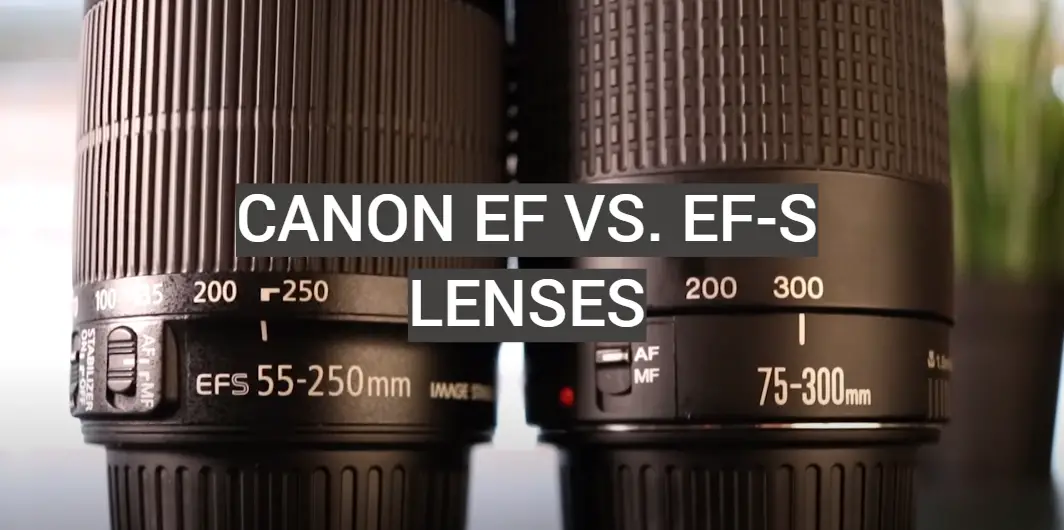
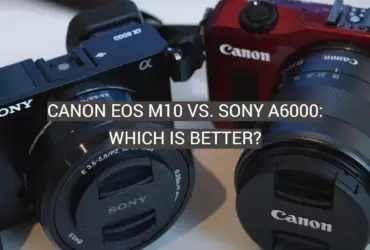

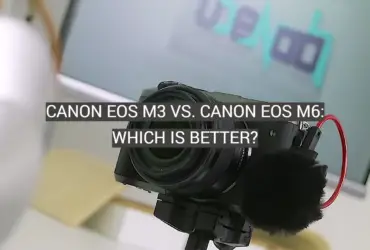
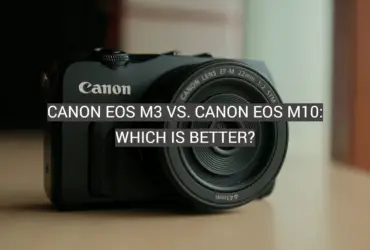

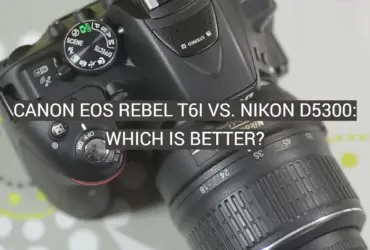
In my opinion, there is a big difference between EF and EF-S lenses. When I first started out in photography, I bought a Canon Rebel T6 with the 18-55mm kit lens. I soon realized that I wanted to start taking photos of weddings and other events, and that I needed a lens with a longer zoom range. I decided to upgrade to the Canon EF 70-200mm f/4L IS USM lens. This lens is an EF lens, which means that it can be used on any Canon camera body. However, because my camera body was a crop sensor camera (EF-S), the 70-200mm lens did not have as much zoom range as it would have on a full frame camera.
I eventually decided to upgrade to a full frame camera body, and purchased the Canon EOS 6D. This camera has a sensor that is the same size as a 35mm film frame, so any EF lens will work perfectly on it. I sold my old EF-S camera body and all of my EF-S lenses, and replaced them with new EF lenses that are compatible with the 6D.
If you are thinking about purchasing a new Canon camera body, I would highly recommend getting one that has a full frame sensor. This will give you the most flexibility when choosing lenses in the future.
I distinctly remember the day I made the switch from Canon EF to EF-S lenses. I had been a loyal Canon user for years, and I loved my lenses. But then I started hearing about the new EF-S lenses and how they were smaller and lighter than the EF lenses. And since I was starting to do a lot more hiking and outdoor photography, I decided it was time to give them a try.
The very first lens I bought was the EF-S 10-22mm wide angle lens, and I have to say that I was blown away by how much lighter and smaller it was than my old EF 17-40mm lens. And not only was it smaller and lighter, but it also produced sharper images. Since then, I’ve gradually replaced all of my EF lenses with EF-S lenses, and I couldn’t be happier with the results.
So if you’re thinking of making the switch from EF to EF-S lenses, I highly recommend giving them a try. You won’t be disappointed!
I’ll be honest – when I first started out in photography, I was completely clueless about the difference between EF and EF-S lenses. I just knew that I wanted the best camera equipment that I could afford, and so I went out and bought a Canon Rebel T5i kit with the 18-55mm lens.
A few months later, after doing some more research, I decided to upgrade to a Canon 6D body and purchase a lens that was better suited for my needs. That’s when I learned about the difference between EF and EF-S lenses.
EF lenses are full-frame lenses, while EF-S lenses are designed for cropped sensor cameras. What this means is that EF lenses can be used on both full-frame and cropped sensor cameras, while EF-S lenses can only be used on cropped sensor cameras.
So why is this important? Well, if you have a full-frame camera and you want to use a lens that’s designed for cropped sensors, it will result in a loss of image quality. Conversely, if you have a cropped sensor camera and you want to use a lens that’s designed for full-frame cameras, it will result in a loss of field of view.
Since I upgraded to a full-frame camera, I now exclusively use EF lenses. The image quality is much better than using EF-S lenses on a cropped sensor camera, and I also have the benefit of using all of the different Canon EF lens mounts.
I’ve been using Canon cameras for a long time and have always used the EF lens mount. I never really gave EF-S lenses much thought until I bought my first Rebel T6. I soon found out that EF-S lenses are designed for crop sensor cameras and won’t work with my full frame camera. I was a little disappointed at first, but I soon realized that EF-S lenses are a lot smaller and lighter than EF lenses, and they’re also a lot cheaper.
After using an EF-S lens for a while, I started to really like it. The smaller size and weight makes them a lot easier to carry around, and the lower price makes them more affordable. I now own several EF-S lenses and I’m really happy with them. If you’re looking for a good lens for your crop sensor camera, I highly recommend giving EF-S lenses a try.
When I first started photography, I was using a Canon Rebel T3i. At the time, I only had the kit lens that came with the camera. I didn’t know anything about lenses, and just assumed that the kit lens was a good one. After doing some research, I found out that there were different types of Canon lenses, and that I should upgrade to something better.
I decided to go with the Canon EF 50mm f/1.8 II lens. This lens is a prime lens, which means that it doesn’t zoom in or out. However, I found that I liked this type of lens better because it forced me to move around more and get closer to my subject.
A few years later, I decided to upgrade my camera body to a Canon Rebel T6i. When I did this, I also decided to upgrade my lens to the Canon EF-S 18-55mm f/3.5-5.6 IS STM lens. This is a zoom lens, which means that it zooms in and out. I chose this particular lens because it has image stabilization, which helps keep your photos from being blurry when you’re taking them handheld.
Overall, I’ve been happy with both of these lenses. The Canon EF 50mm f/1.8 II lens is great for portraits and for shooting in low light conditions, while the Canon EF-S 18-55mm f/3.5-5.6 IS STM lens is great for everyday shooting situations.
There is a big difference between EF and EF-S lenses and it really comes down to size. I made the switch to EF-S lenses when I bought my first Rebel camera and I have never looked back. The smaller size makes them so much easier to carry around and they are perfect for travel. I have never had any problems with image quality, even when compared to my older EF lenses.
I have a personal experience with EF vs EF-S lenses. I used to shoot with an EF lens, but then switched to an EF-S lens. I found that the EF-S lens was much easier to use and was more lightweight. The downside is that the EF-S lens does not have as much zoom range as the EF lens. Overall, I prefer the EF-S lens because it is easier to use and more lightweight.
I have shot with both EF and EF-S lenses, and I find that there is a noticeable difference between the two. The EF lenses are larger and heavier, while the EF-S lenses are smaller and lighter. This difference can be important depending on what you are shooting. For example, if you are shooting a portrait with a large lens, the extra weight of the EF lens may be more noticeable to your subject than if you were using an EF-S lens. Additionally, if you are shooting in a tight space, the smaller size of the EF-S lens may be more advantageous. Ultimately, it comes down to personal preference which lens you choose to use.
I have always been a Canon girl. I started out with a Rebel XT, and have since upgraded to a 6D. I have never had an issue with any of the lenses that I have used, until I tried the EF-S lenses.
The EF-S lenses are specifically designed for crop sensor cameras, while the EF lenses are designed for full frame cameras. I found that the EF-S lenses were not quite as sharp as the EF lenses, and they also did not seem to be as well built.
I ended up selling my EF-S lenses and sticking with the EF lenses. I have never looked back, and have never had any issues with them.
I’m not a professional photographer, but I’ve been using photography as a hobby for a while now. When I first started out, I was using the kit lens that came with my camera. Eventually, I decided to upgrade to a nicer lens and I bought the Canon EF 50mm f/1.8 lens. This is an EF lens and it works great on my camera. A few months later, I decided to get a new lens for my birthday and I bought the Canon EF-S 18-55mm f/3.5-5.6 IS II lens. This is an EF-S lens and it’s not compatible with my camera. If I try to put it on my camera, the lens will not fit because the mount is different.
The difference between EF and EF-S lenses is that EF lenses are compatible with both EF and EF-S cameras, while EF-S lenses are only compatible with EF-S cameras. This means that if you have an EF camera, you can use any EF lens that you want. But if you have an EF-S camera, you can only use EF-S lenses.
I have been shooting with Canon’s EF lenses for years and have never had an issue. I recently purchased a Canon EOS Rebel T6i camera and decided to try out the EF-S lenses. I have to say that I am not a fan of the EF-S lenses. The main reason is because they are not as sturdy as the EF lenses and they feel very cheap. I had an issue with my lens hood coming off while I was shooting and it was very frustrating. I ended up switching back to my EF lenses and haven’t had any problems since.
I have always been a big fan of Canon lenses. I have owned a number of different models, and have never been disappointed. However, when I bought my first digital SLR camera, I was a little confused about the difference between EF and EF-S lenses.
EF lenses are designed for use with full-frame cameras, while EF-S lenses are designed for use with APS-C cameras. This means that EF lenses are generally larger and heavier than EF-S lenses.
EF lenses also have a larger aperture than EF-S lenses, which means that they can capture more light and produce better images in low light conditions. However, EF-S lenses are still capable of capturing excellent images.
Overall, I have been very happy with my EF lens on my EF-S body. The combination has allowed me to capture stunning images both indoors and outdoors.
I’ve been using Canon EF-S lenses on full frame for a while now and I have to say that I really like the results. The smaller size and weight of EF-S lenses makes them a great choice for travel, and they still perform well when mounted on a full frame camera. I haven’t noticed any significant difference in image quality between EF-S and EF lenses, and the reduced price tag of EF-S lenses is a bonus.
I have personal experience with EF-S and EF-M lenses. I used to shoot with an EF-S lens on my crop sensor camera, and it was great! The lens was lightweight and easy to carry around, and the pictures it produced were sharp and clear. However, when I upgraded to a full frame camera, I found that I needed a new lens to take advantage of the larger sensor. I decided to try an EF-M lens, and I was surprised by how well it performed. The lens was even lighter than my old EF-S lens, and the pictures were just as sharp. Overall, I think both EF-S and EF-M lenses are great options for photographers looking for quality images without having to lug around a heavy lens.
I have used both EF and EF-S lenses and I personally prefer the EF lenses. I find that they are a bit more versatile because they can be used on both full frame and crop sensor cameras. I also find that the image quality is a bit better than with EF-S lenses. That said, I have used EF-S lenses and they have worked just fine on my crop sensor camera. So, if you are primarily using a crop sensor camera, then EF-S lenses might be a better option for you. Otherwise, I would recommend sticking with the EF lenses.
I have a Canon Rebel T3i, which I bought specifically because it has an EF-S mount. I also have a few lenses that I’ve collected over the years, including an EF 28-135mm f/3.5-5.6 IS USM lens.
I’ve been really happy with the EF-S mount and the lenses that are available for it. The EF-S mount is designed specifically for APS-C cameras, which is what my Rebel T3i uses. Because of this, the EF-S lenses are smaller and lighter than their EF counterparts. This is great for me because I like to travel light.
The downside of using EF-S lenses on an EF mount camera is that you lose some of the image quality. This is because the image circle created by the lens isn’t large enough to cover the entire sensor on an EF camera. However, the difference in image quality is pretty minimal, and I haven’t seen a noticeable difference in my photos.
Overall, I’ve been really happy with my experience using EF-S lenses on my Canon Rebel T3i. The smaller size and weight of these lenses make them ideal for traveling, and the image quality is still very good.
I have always used EF lenses on my Canon cameras, so I was a bit hesitant to try out the EF-S lenses. But after using them for a while, I really like them! The main difference between the two types of lenses is that EF-S lenses are cropped. What this means is that the image projected by the lens is smaller than with an EF lens. This can be good or bad, depending on what you are using the lens for. I find that for everyday shooting, the cropped image is not a big deal. But if you are planning to print your photos large or use them for professional purposes, then you may want to stick with EF lenses.
I have used both EF and EF-S lenses extensively, and I have found that there are a few key differences between the two. First, EF lenses are full frame lenses, while EF-S lenses are designed for cropped sensor cameras. This means that EF lenses will give you a wider field of view when used on a cropped sensor camera than EF-S lenses will. Second, EF lenses are typically more expensive than EF-S lenses. Finally, EF lenses generally have a higher quality build and produce better image quality than EF-S lenses.
I have a few lenses that I use on my Canon Rebel T6i. I have the standard 18-55mm lens that came with the camera, as well as a 55-250mm zoom lens and a 75-300mm zoom lens. I also have a 10-22mm wide angle lens and a 24-105mm standard lens. The last lens I bought was an EF-S lens because I wanted to be able to take close-ups of my kids.
The EF-S lens is smaller and lighter than the EF lens, which is important when you are carrying around a lot of gear. The zoom range is also a bit shorter on the EF-S lens, but it still gives me plenty of options for capturing different shots. I really like the close focus feature of the EF-S lens; it allows me to get great shots of my kids’ faces when we are playing together.
Overall, I am very happy with the EF-S lens and would recommend it to anyone looking for a good close-up lens.
When I first started out with photography, I was using the kit lens that came with my camera. It was an EF-S lens, which meant that it couldn’t be used on cameras with a full-frame sensor. I later upgraded to a camera with a full-frame sensor, and realized that I needed new lenses. I did some research and realized that I could buy EF lenses, which would be compatible with both my old and new camera. I decided to go with the EF 50mm f/1.4 lens, which is a great lens for both beginner and advanced photographers. If you’re looking for a good starter lens, I would recommend the EF 50mm f/1.8 STM lens, which is an affordable option that still provides great quality photos.